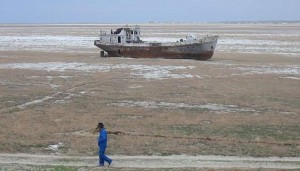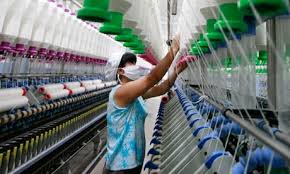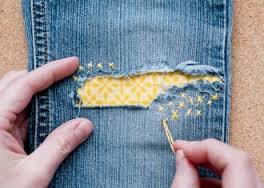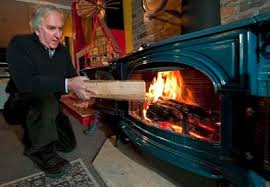Just to recap – we want to get by with a lot less energy, and there are lots of areas of living where we are profligate. We clearly need clothes and furniture. Whilst smaller than buildings and infrastructure, when you add together millions of people, and people’s affluent ability to buy large amounts of these items, the results are far reaching.
There are four aspects to the design of clothing and furniture. These are buying local, designing to last, designing to be repaired, and designing wastage to a minimum. Taken together, the idea is to reduce the throughput (materials and energy) that gets used up just owning things. Reducing our footprint is not just about using less stuff – but using stuff that use up less materials and energy.
Going Local
We need to be able to use locally produced sources as this encourages skilled labour everywhere, and maintains healthy local economies. It means that there would be very little need for transportation as an essential part of the production of clothing and furniture. It also reduces the need to import vast amounts of exotic products.
These items require a large consumption of minerals, water and fuel. The transportation of many of these products from distant lands, and the massive price differential maintained by global trading practices leads to a massive consumption of materials.
The cheap pricing has led to many design decisions being made to use cheaper materials. These materials are extracted outside the west under poor conditions, which cause damage to soil, forests, add to climate change and lock third world countries into trade patterns that force more exports of materials.
Before 50 years ago and cheap global shipping, many of the materials for furniture, clothes and the bountiful other products we have, were not imported from far away. Unfortunately cotton and silk are tropical products, but they are not the only textiles. Hemp can grow well in temperate climes, and has a wide variety of uses. The idea behind a sustainable textile strategy is to bring in tropical textiles as a minority specialist product, but to have the majority of produce being local. Every country should aim to produce most of its own textiles, and trade the remainder, since as Adam Smith said, each area does have something it does better than everywhere else, and it is better all round to trade this. It is far from ideal to trade everything, as this adds massively to the transportation of goods around the world.
Cotton farming needs a lot of water. Humid tropics have this naturally and so are best placed to grow cotton, but many countries have irrigated dry plains to grow cotton, deforested their land, forced migration on millions, and are locked into an economic cycle that forces more cotton production. Water flowing in hot dry plains for the purposes of cotton have drained much of the water from Lake Chad and the Aral Sea, turning millions of hectares into barren salt flat.
Every country needs to manage their own forests for the purposes of sourcing wood for their own furniture as well as plenty of other wood products. This is doubly important, as the use of petrochemicals for furniture is also unsustainable. Wood is renewable, and the trees soak up carbon dioxide while they grow.
Using maintained forests for furniture allows us to have our cake and eat it.
Designed to last
Another way of cutting down the amount of resources we use is not just buying less goods, but preferring goods that are made to last. This reduces the strain on the land to produce the items and helps with biodiversity, land quality depletion, deforestation and the problems of landfill and toxic waste.
Clothes are often designed with built in obsolescence in the same way as other consumer goods. By designing to overcome wear and tear, clothes and other goods will undoubtedly last longer. Designing in order to maintain a fashion that moves more slowly will also translate into longer lifetimes of goods. They are currently designed to age either visibly or materially or both, so that the consumer will be forced to buy another one sooner. Strangely enough this is actually a false economy for the seller. Since the buyer has only so much income with which to buy a particular class of goods, by reducing the time between purchases the buyer has less to spend per item. The seller then has to design goods that are cheaper to make.
Designing clothes that last longer, and with motifs that retain style and attractiveness, cost more to make and will be more expensive to buy. But these clothes will last longer, so buyers can spend more on them. Although the volume of sales is clearly less, there can still be a living to be made making and selling locally-made clothes. Clothes made locally, in smaller numbers for fewer buyers can be more individually tailored, and this too increases the quality and time in use for each garment.
The designing and making of furniture for a longer term requires the use of better materials, better techniques and better craftsmanship. This provides more enjoyable work, as the making of furniture ought to be conducted in every locality (with less transportation). Similar to clothing, fewer items allow more thought to go into each item. Such though includes use of the best available local materials and resistance to wear and tear. Although the fewer items and higher quality craftsmanship necessarily mean a higher price, this is reflected in the higher quality furniture and that the furniture will last much longer.
Negative Economies of Scale
The manufacture of many goods on a large industrial scale results in a lot of wastage. This is intended to be low in comparison to many small scale manufacturers, since the wastage is averaged over much higher input volumes, but small scale craftsmen have the opportunity to use odds and ends of materials for other purposes that do not fit in a big business model. Industry wishes to specialise in core activities, with an extreme division of labour, to take advantage of its workers and machines. A small scale manufacturer can build in other small jobs. Small scale manufacturers can also make non-standard items with the material available. Large industry has to use standard sizes and shapes of material, which logically lead to waste.
Designed to get repaired
Clothes and furniture can be repaired, at least some of the time. Eventually all things come to a point when they can no longer be repaired. Offcuts from original cloth can be put aside for repairs, since it is best to repair with cloth cut from the original. The same is true for wood and other materials. Many composite items wear in different rates, thus the soonest-wearing need replacing, but the rest can last a long time. Without the timely provision of these components the whole also has to be cast aside. The offcuts from the manufacture of wooden items can be used to make the parts most likely to fail in other items.
Repairing is an art, and the losses of work from the reduced amount of actual items made can move into repairing. Today, there are few repair shops, since it is cheaper to buy a replacement. There will be many more repair workers in future, experts in how to maintain clothes and furniture or anything else. The key is in having a repairer work with the maker in designing items. This will result in items built with the intent to be repaired at some point. Very often today, items are designed specifically to not be repairable, in that the working parts are welded closed. There is therefore a lot of scope in redesigning items so that they can be repaired.
Even when items can no longer be repaired many items can be salvaged, with parts that move on to a less noble purpose. Still, many items don’t have to be thrown out completely. These secondary or tertiary uses also fill in gaps, such that new material requirements are reduced. A lot of cloth from old clothes can be used as rags, mats, carpets, insulating or stuffing material, packaging and of course patch-work quilts.
Anything wooden can eventually be burned, and used to warm up a house, or cook a meal. But this is the cheapest use of wood. Every effort ought to be taken to get the most out of a tree before we resort to burning it.






